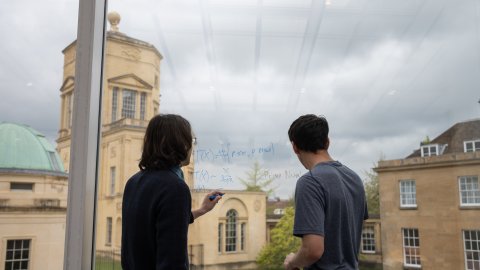16:00
A rough path approach to pathwise stochastic integration a la Follmer
Abstract
We develop a general framework for pathwise stochastic integration that extends Follmer's classical approach beyond gradient-type integrands and standard left-point Riemann sums and provides pathwise counterparts of Ito, Stratonovich, and backward Ito integration. More precisely, for a continuous path admitting both quadratic variation and Levy area along a fixed sequence of partitions, we define pathwise stochastic integrals as limits of general Riemann sums and prove that they coincide with integrals defined with respect to suitable rough paths. Furthermore, we identify necessary and sufficient conditions under which the quadratic variation and the Levy area of a continuous path are invariant with respect to the choice of partition sequences.


